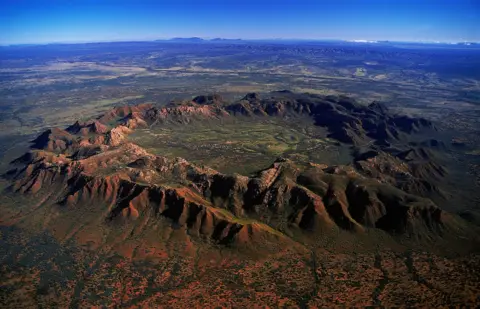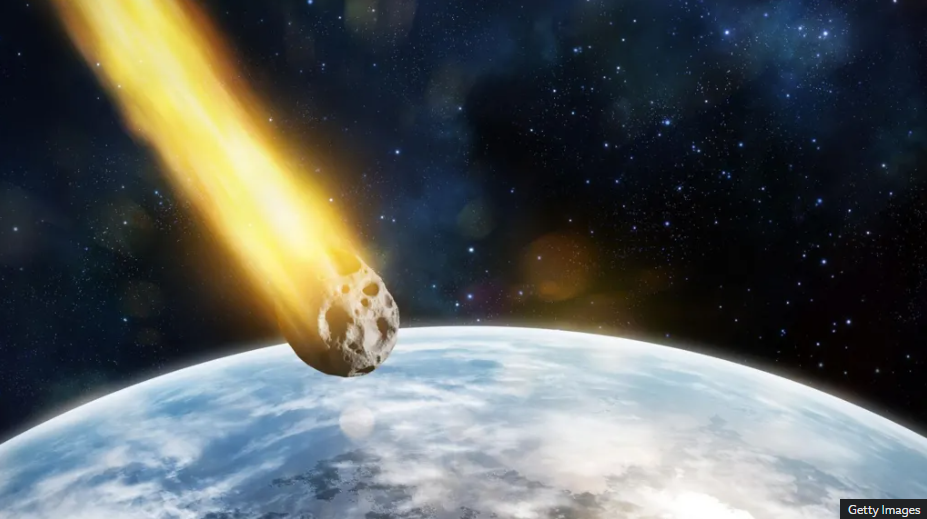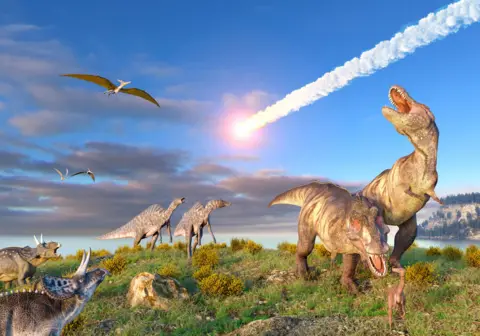Full Story: BBC (10/3)
The asteroid that killed the dinosaurs was not alone
The huge asteroid that hit Earth and wiped out the dinosaurs 66 million years ago was not alone, scientists have confirmed.
A second, smaller space rock smashed into the sea off the coast of West Africa creating a large crater during the same era.
It would have been a “catastrophic event”, the scientists say, causing a tsunami at least 800m high to tear across the Atlantic ocean.
Dr Uisdean Nicholson from Heriot-Watt University first found the Nadir crater in 2022, but a cloud of uncertainty hung over how it was really formed.
Now Dr Nicholson and his colleagues are sure that the 9km depression was caused by an asteroid hurtling into the seabed.
They cannot date the event exactly, or say whether it came before or after the asteroid which left the 180km-wide Chicxulub crater in Mexico. That one ended the reign of the dinosaurs.
But they say the smaller rock also came at the end of the Cretaceous period when they went extinct. As it crashed into Earth’s atmosphere, it would have formed a fireball.
“Imagine the asteroid was hitting Glasgow and you’re in Edinburgh, around 50 km away. The fireball would be about 24 times the size of the Sun in the sky – enough to set trees and plants on fire in Edinburgh,” Dr Nicholson says.
 Getty Images
Getty Images




